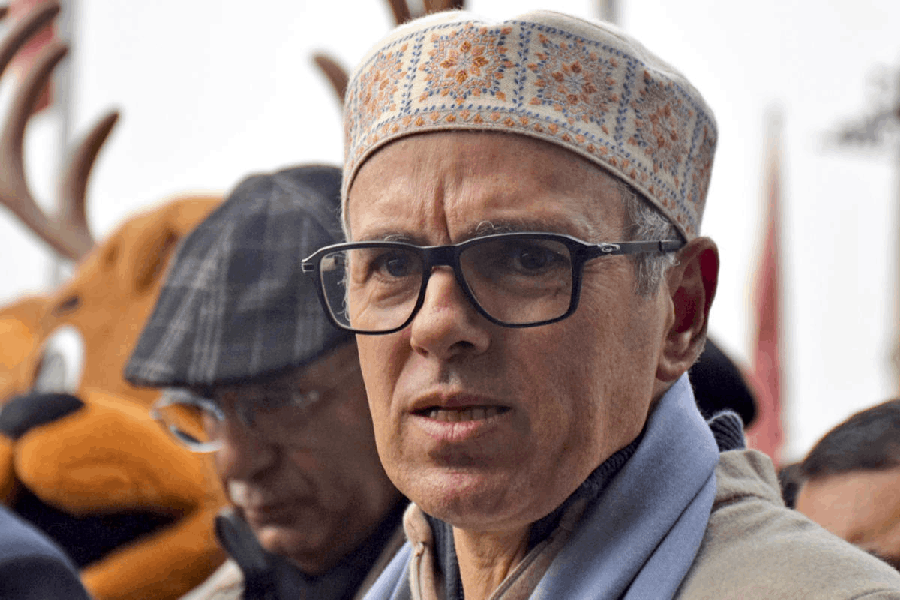 |
| Medicine Nobel winner Robert Edwards (left) attends the 30th anniversary of the world’s first test-tube baby Louise Joy Brown (right), holding her son Cameron in July 2008. At the centre is Louise’s mother Lesley Brown. (AP) |
Oct. 4: A British scientist has won the 2010 Medicine Nobel for research that led to the world’s first test-tube baby 32 years ago, while a Calcutta doctor who independently repeated the feat in India 10 weeks later was driven to suicide.
The Nobel Foundation today announced the award for Robert Edwards, 85, for developing in-vitro fertilisation (IVF) techniques that have helped nearly 4 million infertile couples have babies.
The award almost coincides with the anniversary of the announcement of the birth of Durga — India’s first and the world’s second test-tube baby — by reproductive scientist Subhas Mukerji on October 3, 1978.
But Mukerji was called a fraud and faced bureaucratic vindictiveness in Bengal, and took his own life on July 19, 1981, according to scientific papers and historical notes.
Edwards, a professor emeritus at Cambridge University, started working on IVF in the 1950s. He developed the technique — in which egg cells are removed from a woman, fertilised outside her body and then implanted into the womb — together with British gynaecologist Patrick Steptoe, who died in 1988.
Louise Brown, the first baby born through the procedure on July 25, 1978, in a Manchester clinic, said about the Nobel: “It’s fantastic news; me and mom are so glad. We hold Bob in great affection.”
Brown has herself given birth naturally, as have many other IVF babies — a fact the Nobel committee described as “probably the best evidence for the safety and success of IVF therapy”.
Mukerji made his own contributions to the technique. The Indian Council of Medical Research in 2005 credited him as the first in the world to use hormones to stimulate ovaries to make extra eggs, the first to harvest oocytes (eggs) through (a relatively easy) transvaginal route, and the first to freeze and thaw human embryos before transplanting them into a woman’s uterus.
Yet Mukerji and his two colleagues “were ridiculed by the medical fraternity and victimised by bureaucracy” for months after their work, a senior Indian reproductive scientist, T.C. Anand Kumar, wrote in 1997 in Current Science, a journal of the Indian Academy of Sciences.
Kumar, who played a key role in the birth of India’s first scientifically documented test-tube baby in Mumbai on August 6, 1986, had analysed Mukerji’s handwritten laboratory notes, scientific papers, and correspondence with the Bengal government.
His analysis revealed the Bengal government had appointed a panel headed by a radiophysicist — with a gynaecologist, a neurophysiologist and a physiologist as members — to examine the claims by Mukerji, who was posted at Bankura Sammilani Medical College.
None of the panel members “could have had background or insight into the modern science of reproductive technologies”, Kumar wrote, questioning the Bengal government’s rationale in appointing an expert from a “totally alien” field to head the panel.
This was just over a year after the formation of the Left Front government, which is widely held to have targeted and destroyed the standards of excellence in Bengal academia, often with the weapon of political appointments.
Since December 1978, the state authorities prevented Mukerji from presenting his work at scientific conferences and denied him permission to visit Kyoto University in Japan, which had invited him at its own expense. They transferred him in June 1981 to an institute of ophthalmology, an area where he had no expertise. Mukerji was only 50 when he hanged himself a month later.
Mukerji used to travel from Bankura to Calcutta every weekend to carry out his research with colleagues Sunit Mukherjee and gynaecologist Saroj Kanti Bhattacharya, who were at Jadavpur University and Calcutta Medical College.
“We were humiliated. There were people in the medical fraternity who wanted to crush him,” said Mukherjee, now 80. “It was Kumar’s in-depth analysis that revealed the facts.” Kumar himself died earlier this year.
Steptoe and Edwards too faced resistance from Britain’s medical establishment, which stopped their research funds, and were able to continue only thanks to a private donor.
Their work stirred an “ethical debate”, with the Vatican, other religious leaders and some scientists demanding the project be stopped. The Vatican opposed the separation of conception from the “conjugal act” and condemned the destruction of eggs that are taken from a woman’s body but not used.
Medical experts have pointed out that Mukerji’s pursuit of IVF occurred in an era when there was little awareness in India about ethical aspects of research. In his 1997 report on Mukerji’s contributions, Kumar had mentioned how Edwards would get his proposals for human experiments approved by institutional ethics committees.
Sunit Mukherjee said the embryo experiments in Calcutta did not have approval from any ethics committee. There was no culture of seeking approvals at the time, he said.
Yet the Calcutta team froze an eight-cell embryo, stored it for 53 days, thawed it and implanted it into a 31-year-old woman’s uterus. Edwards and Steptoe did not freeze the embryo, and their technique of extracting eggs from ovaries was more difficult than the one used by the Calcutta researchers, one expert said.
Edwards was not in good health when the Nobel committee tried to reach him today. “I spoke to his wife and she was delighted and she was sure he would be delighted too,” committee secretary Goran Hansson said.
It wasn’t immediately clear why the Nobel committee took so long to honour Edwards, and some experts criticised Britain for not having awarded him a knighthood. But Edwards told a newspaper in 2003 he was “not terribly bothered” about not getting a knighthood.
“I’m a very Left-wing socialist and I won’t shed a tear. But if you can organise a Nobel, please go ahead,” he joked.










